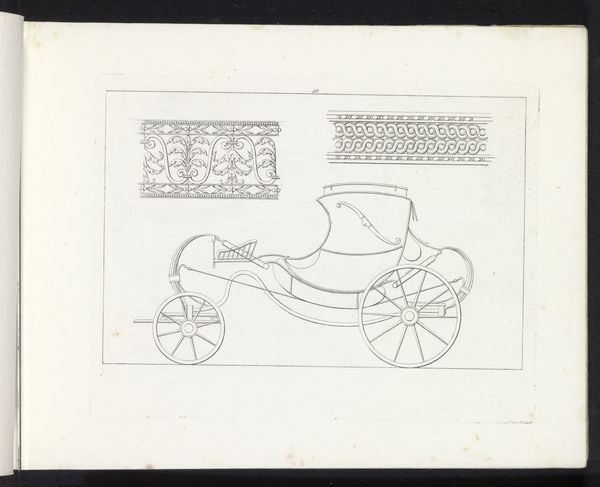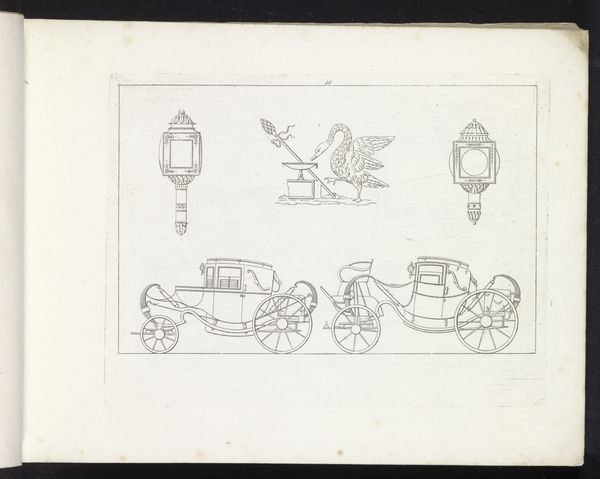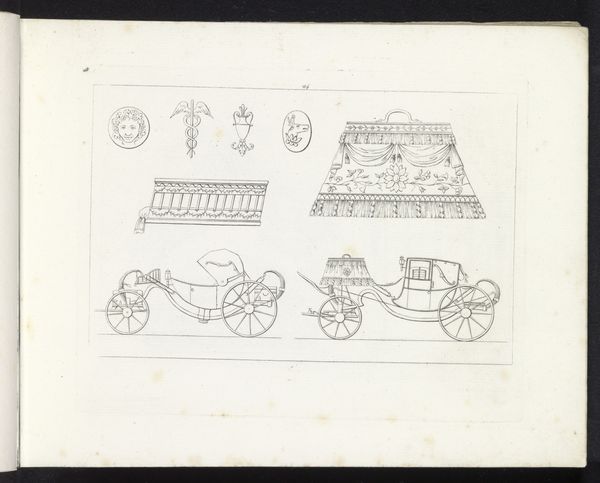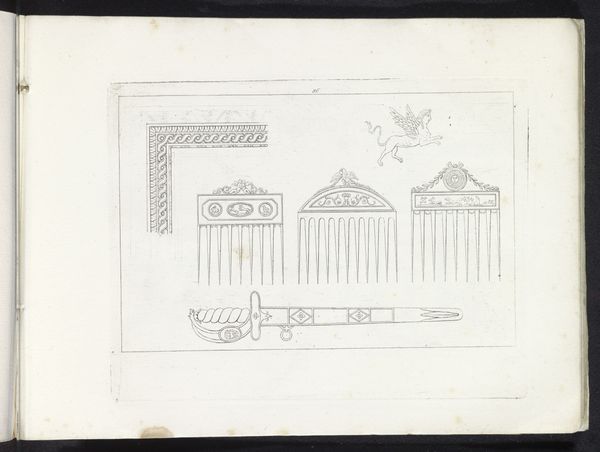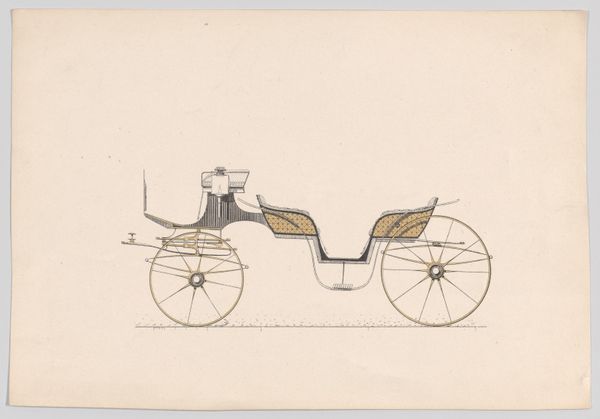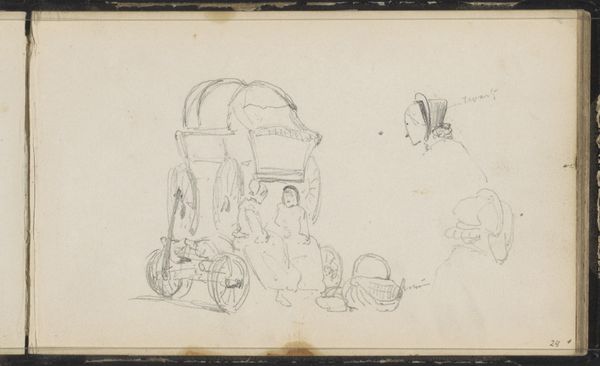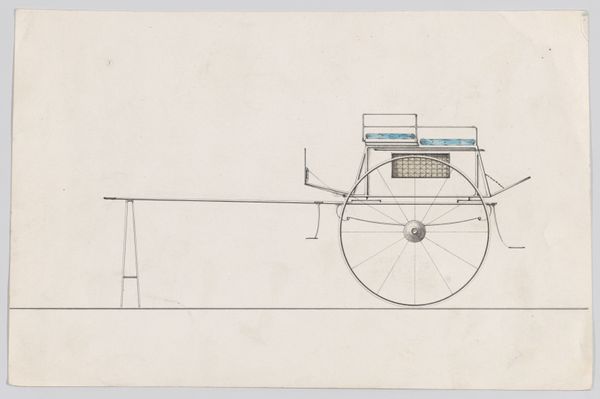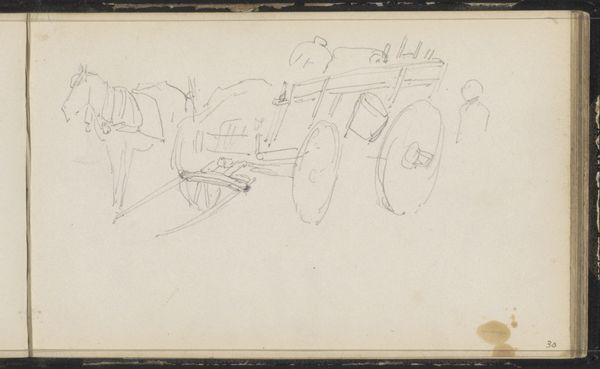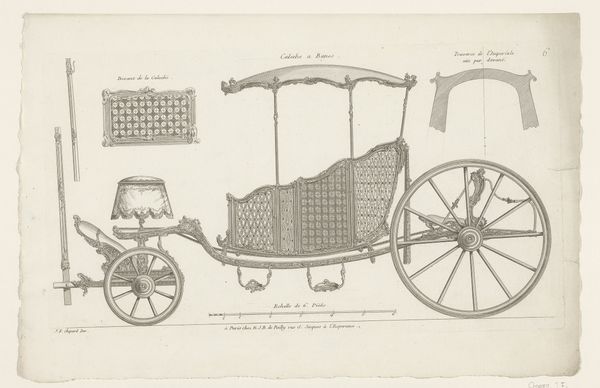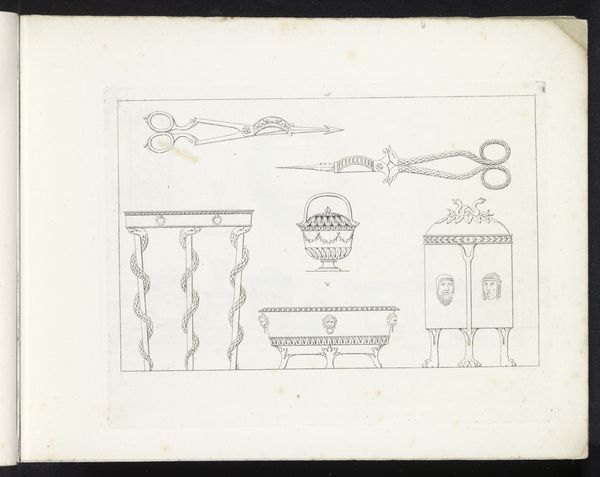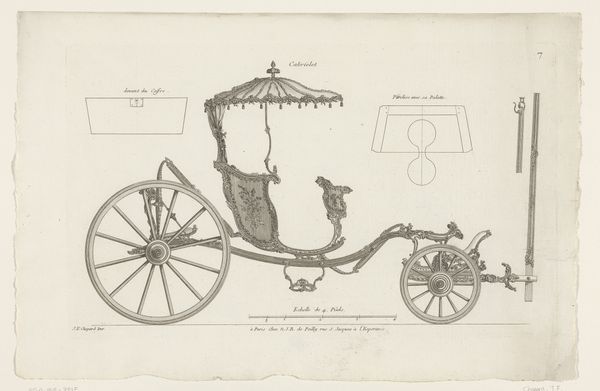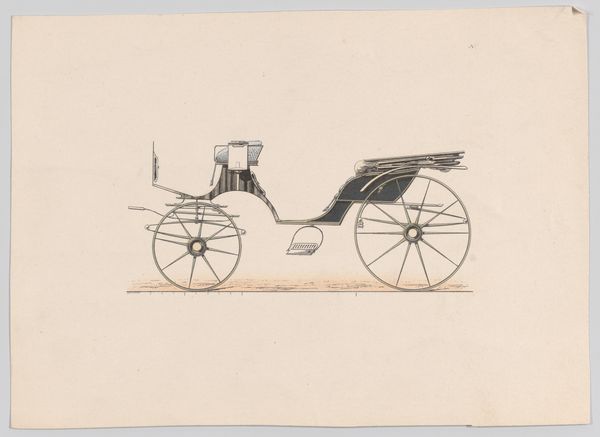
drawing, ink, pen
#
drawing
#
comic strip sketch
#
neoclacissism
#
pen sketch
#
sketch book
#
landscape
#
personal sketchbook
#
ink
#
sketchwork
#
geometric
#
pen-ink sketch
#
pen work
#
sketchbook drawing
#
pen
#
storyboard and sketchbook work
#
sketchbook art
Dimensions: height 165 mm, width 216 mm
Copyright: Rijks Museum: Open Domain
Curator: Here we have a page from a sketchbook, entitled "Rijtuig, leeuwenvel, handgreep en een ornamentele rand"—which translates to "Carriage, lion's skin, handle and an ornamental border." It's an ink and pen drawing made around 1817 by Pietro Ruga. Editor: My first impression is of meticulousness. It's very architectural, almost like a technical drawing but softened by the flowing lines. The different elements—carriage, lion’s pelt, decorative handle—feel disjointed yet connected through the consistent linework. Curator: Absolutely. The sketchbook context is key; Ruga was likely working through design ideas here. This wasn’t meant as a finished piece for public consumption but rather an exercise in Neoclassical aesthetics, heavily influenced by classical motifs and forms that would have political weight. Editor: The materiality itself speaks to that careful process. Pen and ink offer a level of control and precision, suggesting a methodical approach to crafting these aspirational objects. We see him problem-solving the ornamentation through this tangible means of design. Curator: Exactly. Notice the ornamental border; it echoes architectural friezes. The lion pelt speaks volumes about status. Consider also the labor involved in crafting such an intricate carriage—the artisans, the metalworkers, the leather tanners all playing their roles within that early 19th-century economy. This relates to the distribution of wealth, taste, and power during the early stages of modern capitalism. Editor: Right, the lion's pelt signals luxury, which translates to consumption. Beyond the direct craftsmanship, we must account for resource extraction and supply chains too, adding even further dimensions to this simple carriage design. The act of drawing and the final construction both underscore a whole system of making and procurement. Curator: It is fascinating to consider this sketch within that larger context of workshops and class structures and the cultural landscape of the time. It emphasizes that the object and sketch weren't existing in a vacuum but are interconnected and represent complex labor and sociopolitical constructs. Editor: For me, this single sketchbook page really underscores the tangible connection between an artisan’s thought process, the materials used, and the socioeconomic currents that fueled such elaborate creations. Curator: I see it also as a tangible, rare artifact of material culture production. Editor: Agreed. It all ties together.
Comments
No comments
Be the first to comment and join the conversation on the ultimate creative platform.
